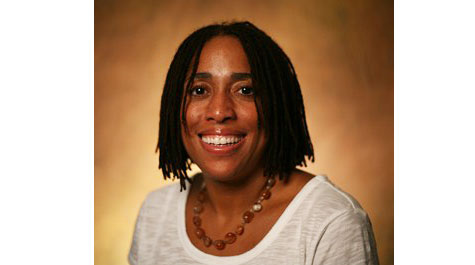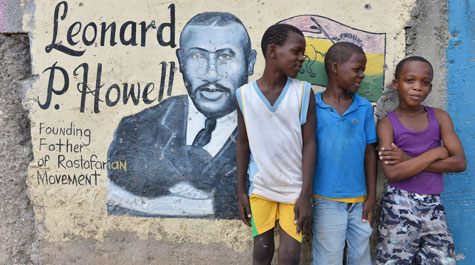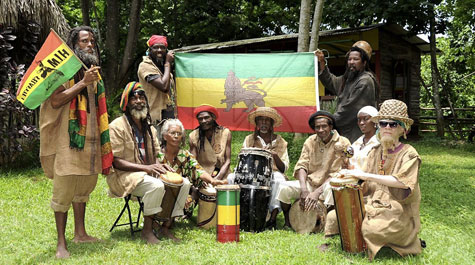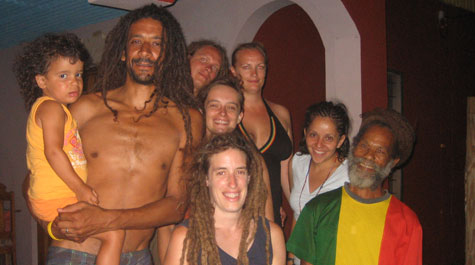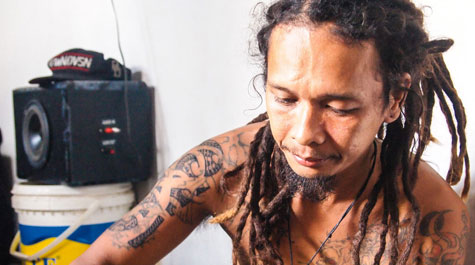How Rastafari moves William & Mary
As a teacher of Afro-Caribbean history and culture, Senior Lecturer of Africana Studies and Linguistics Iyabo F. Osiapem noticed that her students at William & Mary took quite an interest in Bob Marley along with the unique hairstyles and colors surrounding the practice of Rastafari, a spiritual approach to being African in the New World, which was developed in Jamaica during the 1930s. However, she also noticed that students held incorrect notions about the Jamaican faith.
That led her to develop How Rastafari Moved the World, one of just a few courses offered at Virginia colleges and universities about the topic. While the class is specifically on Rastafari, it’s broadly on the development of African Diaspora and the process of cultural and identity creation in the Caribbean, according to Osiapem.
“Because the students mostly associated the culture of Rastafari with just reggae music and the practice of smoking marijuana as a means of enlightenment and not as a spiritual and socio-political movement, I had to do something about that,” she said. “There is so much more to this culture, like the seven principles of Rastafari that members use to guide their lives.”
{{youtube:medium|AMk-taJosKY, Iyabo Osiapem, a senior lecturer of Africana Studies and linguistics at William & Mary discusses the genesis of the term "Rastafari."}}
A new beginning
Jamaican-born Leonard P. Howell conceived Rastafari as a religion and practice after his time living in New York City during the early 1920s. Howell, a supporter of the teachings and philosophies of fellow Jamaican and activist Marcus Garvey believed in the connection between western blacks and the continent of Africa. He specifically told Africans of the Diaspora to look towards Ethiopia. He also promoted the belief of self-determination, black consciousness, attainment of collective black wealth and repatriation to Africa, said Osiapem.
“It was a ‘perfect storm’ that brought Howell and Garvey together,” she said. “Garvey had established the Universal Negro Improvement Association, and Howell, looking for a sense of identity for black people, found that he shared some of the same attitudes that Garvey was advocating for blacks in the United States. Taking the values asserted by Garvey, Howell then used the ideas of personal resolve and pooling together monetary resources to change the conditions of early 20th century [black] Jamaica.”
At the beginning of the 1900s, Jamaica had a very limited social and economic infrastructure, and Howell wanted to figure out what could be done in this post-emancipation period to help positively transform the future of poor black Jamaicans, said Osiapem. And according to Osiapem, Howell looked toward Ethiopia and the crowning of Haile Selassie I as the emperor of an African nation as an example of black prosperity and power.
“Jamaica, during the early 1900s was a very poverty-stricken place,” Osiapem said. “So, in doing his best to help [black] Jamaicans find their worth in society, Howell pulled together the ideas of religion and black political ideology and focused it on Africa. He wanted to bring the concept of Africa in all its glory to Jamaica. Howell then began to preach what he called ‘Ras-Tafar-I.’ The word ‘Ras’ denotes the term ‘king’ and ‘Tafari’ was Selassie’s name before his coronation in 1928 and the letter ‘I’ signifies the enumeration of the first male born in a family line, the number one as in first, and the first person singular pronoun in English. The ‘I’ also represents the human eye in which people perceive the world around them. So, the letter ‘I’ in Rastafari culture is a crucial characteristic to adherents of the faith.”
And according to Osiapem, Rastafari refers to the collective “oneness” people who understand the faith share with one another. However, Howell based one aspect of Rastafarian culture on the belief that information about the black experience in the King James Version of the Bible was proactively taken out or mistranslated by early biblical scholars, said Osiapem.
“Rastafarians believe that the Bible as we know today is incorrect,” she said. “It is argued that the information in this holy text is wrong because there was an effort to take the black experience out of both Old and New Testaments before being authorized by King James I of England for mass distribution to the world. And the goal of the Rastafarians is to correct the mistake by infusing black ideology for their followers.”
Also, some Rastafarians believe that Selassie is the incarnation of God on earth and that Ethiopia is the exact location of "Zion" or the city of God. As such, many believers have traveled to live in or have made a pilgrimage to Shashamane—a 500-acre region of land in Ethiopia that Selassie left for members of Rastafari—since the 1950s, according to Osiapem.
In the classroom
“The class spends a significant amount of time on black liberation movements throughout the Caribbean, such as the Independence of Haiti in 1803,” Osiapem said. “The students come to appreciate the struggles that black communities have continuously engaged in so that their communities could find political, cultural and spiritual emancipation from nations that assisted in colonizing individuals.”
{{youtube:medium|Rg_hUK-73Es, Iyabo Osiapem, a senior lecturer of Africana Studies and linguistics at William & Mary discusses how Rastafari 'moves' the world}}
According to Jayqua Williams ’20, she had no real knowledge of Rastafari other than the fact Bob Marely believed in it. After her orientation aide informed her about Osiapem’s class, the subject piqued her interest and after completing the course, she learned a lot more including what led to Rastafari separating from Christianity in Jamaica, said Williams.
“The Maroon groups of Jamaica separated themselves, and Rastafarianism began in the years of 1930s after post-slavery oppression,” Williams said. “In addition, I learned that as a whole, the culture was shunned by Christian society and the followers of Rastafari were considered outsiders. Everything I learned in the class was totally new to me such as how the religion has now spread to countries like Great Britain, Brazil and the United States. I would highly recommend it to all new students.”
In addition to having a following in the countries of Great Britain and the United States, Rastafari has gained notoriety as a religion in Japan, New Zealand and Germany, according to Osiapem.
Although the class is only offered in the fall, Osiapem is currently working on developing more material for her class in the country of Dominica this spring by talking to local followers of the faith, according to Osiapem.
“I see this class being offered here at William & Mary for a long, long time,” she said. “Rastafari is a very visible culture, and I doubt that the music of Bob Marley and other reggae artists will ever go out of style and that’s what usually brings students to this course.”














